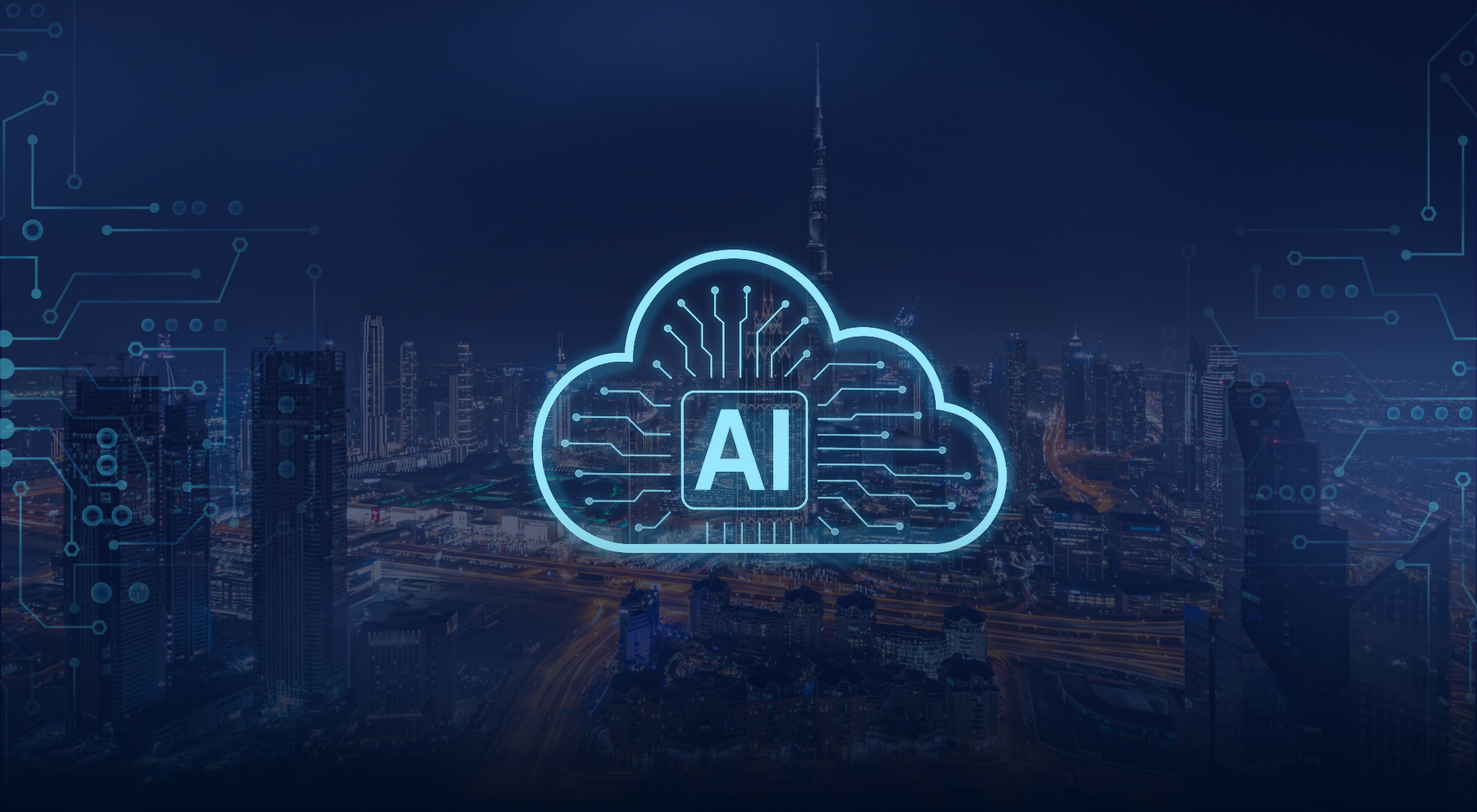In recent years, the rise of artificial intelligence (AI) technology has transformed how work is done in different sectors, as it allows users to complete tasks with greater efficiency and creativity. Nevertheless, one growing concern often goes unnoticed: Shadow AI. These are AI programs that are unapproved, unregulated, and embedded in common productivity tools such as email apps, text editors, and team collaboration platforms. Unlike officially sanctioned business tools, Shadow AI operates covertly, often without the awareness or approval of IT departments or data governance teams. This tool could unintentionally lead to the exposure of important information such as private company data and personal details as well as exclusive research findings. This behavior is often driven by users who install third-party AI add-ons, use unauthorized AI-powered features, or integrate external AI services without proper security oversight, all factors that significantly increase the chances of data security breaches. The risks associated with Shadow AI are heightened by the methods of data leakage it employs that can circumvent security protocols and take advantage of lapses in user knowledge and company policies. Tackling this problem effectively entails grasping how Shadow AI functions within everyday productivity tools; recognizing the sensitive data most vulnerable to compromise; and evaluating the behavioral aspects that lead to heightened vulnerability. Effective ways to address problems should include using tools like AI monitoring and anomaly detection to oversee activities and focusing on training employees to prioritize security awareness within the organization well as implementing policies that govern the usage of AI in the workplace properly. The aim of this insight is to delve into how Shadow AI enables data leaks and evaluate the risks involved while suggesting a strategy to combat this danger and protect confidential data in today’s AI-driven work environment effectively.
How does Shadow AI function in productivity software tools?
Shadow AI functions within productivity tools using unmonitored AI features to aid users in completing tasks more efficiently without direct supervision or formal incorporation into company IT systems.[1] These covert AI-powered operations help with data handling and analysis to empower users to uncover insights, automate decisions and simplify workflows,[2] [3] leading to boosts in productivity and improved task accomplishment rates. In applications such as G Suite and similar platforms, Shadow AI works behind the scenes to analyze personal information for tasks like improving scheduling, suggesting document revisions, and organizing communications more effectively through smart sorting features. These functions are often unseen by both users and system administrators.[4] This merging of tools with personalized productivity methods highlights the complex issues surrounding data management, individual control over technology use, and organizational supervision. In the realm of productivity applications where Shadow AI is on the rise, it’s crucial for companies to set up monitoring and control procedures to harmonize advancement with adherence to rules, enabling AI-powered productivity gains without jeopardizing data integrity and security.
What types of sensitive data are the most vulnerable to leakage through Shadow AI?
In the realm of Shadow AI’s impact, across fields, categories of confidential data are at a heightened risk of being exposed. Particularly, demographic details and personal characteristics stand out as notably susceptible to breaches. Studies have shown that harmless supplementary data, like logs of social interactions, can be decoded to deduce intimate details such as age or past substance consumption patterns from supposedly anonymized datasets.[5] The level of risk increases due to the capability of property inference attacks used in Shadow AI to access information like gender, without it being the focus of the analysis originally intended.[6] Facial image studies have demonstrated that even details such as gender, not directly related to a model’s purpose, can still be uncovered through analysis and lead to privacy violations for individuals.[7] The relationship between data demographic characteristics and how models make inferences, reveals a scope of vulnerability that includes not only obvious identifying information but also hidden personal traits that could be compromised. To address the risks introduced by Shadow AI regarding sensitive demographic and personal data, it is essential to implement robust data governance structures and advanced privacy protection measures.
What strategies can companies use to identify Shadow AI operations within their systems?
Organizations can effectively identify Shadow AI activity by using a mix of cybersecurity tools based on AI technology alongside cloud access security brokers (CASBs) and systems that analyze user and entity behaviors to track any unauthorized usage trends within their systems.[8]
AI-driven intrusion detection systems have the capability to scrutinize amounts of network and application data instantly to pinpoint any activities that stray from the normative benchmarks in place. For instance, using unauthorized generative AI tools or the unexpected introduction of unverified AI-based processes within corporate settings.[9] By incorporating these systems with Cloud Access Security Brokers (CASBs), organizations gain insight into cloud-related operations to pinpoint and manage shadow AI implementations that might circumvent IT protocols while presenting notable security and compliance threats.[10] In addition to that, UEBA application helps companies spot trends that hint at AI usage by linking user behaviors to corporate rules and recognized threat paths; this effectively links technical measures with human actions.[11] When these integrated systems are put into action together, they don’t just aid in spotting and handling shadow AI risks but also emphasize the importance of organizations enhancing their surveillance abilities to keep up with the swiftly evolving field of AI technologies.[12] In light of the growing complexity and prevalence of shadow AI technology, in today’s landscape it is crucial for organizations to proactively invest in security frameworks and foster collaboration across IT, security and operational departments to protect assets and ensure adherence to regulatory requirements.
How can employee training reduce the likelihood of unintentional data leakage?
Employee training is crucial in minimizing the chances of data leaks by filling in gaps in understanding technology and operational aspects well as human behavior in the workplace, effectively and systematically.[13] Keeping the workforce updated on the data security practices through training helps them stay alert against new risks like phishing attacks and unintentional data breaches to reduce the possibility of leaks in digital and organizational environments.[14]
In addition to that, programs that promote awareness and are integrated into training activities stress the role of keeping data confidential and highlight the outcomes linked to information leakage. This helps establish a sense of responsibility that connects actions with company rules.[15] The training programs also support policies on not disclosing information and define employee duties clearly, encouraging an attitude towards handling data that covers daily operations and the use of technological tools.[16] To enhance performance to the extent is, by customizing training programs to target individual human attributes like cognitive restrictions and social factors that influence behavior patterns, which can enhance workers’ perception of risk levels while also refining their judgment skills to minimize mistakes often resulting in data security breaches.[17] As technology becomes increasingly embedded in workplace routines, it is vital to understand how employee behavior interacts with AI tools and organizational systems; it is crucial for companies to dedicate resources to training initiatives that not just inform but also equip individuals with the necessary tools to recognize and address potential risks effectively, creating a strong shield against accidental data breaches.
What actions can be taken to effectively regulate the use of AI tools?
To effectively manage the use of AI tools, policies require enforcement methods that can adapt to legal frameworks and technological advancements within organizations. Enforcement tactics are crucial as they connect the assessment of AI system efficiency to real-world repercussions directly; this establishes responsibility and effectively discourages abuse.[18] Many times, these methods involve conformity checks that thoroughly assess if AI systems adhere to set standards and rules; charging penalties for non-compliance does not just discourage financially but also establishes a clear limit for what behavior is deemed acceptable within organizations.[19] Moreover, the legal review procedure allows individuals or entities impacted by AI to pursue compensation for the damage caused, creating an avenue for seeking justice and bolstering confidence in regulatory structures.[20] The interaction among these enforcement methods guarantees that policy actions are not just theoretical but are put into practice as deterrent measures covering adherence and legal responsibility aspects. Amidst the growing risk of data exposure due to the rise of AI technologies in fields dealing with demographic and behavioral data, it is crucial for policy actions to stay adaptable and all-encompassing to cope with changing risks while upholding strict supervision in every affected sector at all times.
Conclusions
The findings from this insight emphasize how Shadow AI is deeply ingrained in productivity tools and poses issues for managing data securely and ensuring privacy protections are in place effectively within organizations’ operations and information flows. Without explicit oversight measures in place to monitor its activities, it covertly disrupts existing security protocols and introduces serious questions about maintaining the integrity of data stored and ensuring compliance with regulations. The risk of Shadow AI being used to manipulate data or extract sensitive personal details, even from supposedly sanitized information sets, indicates the increasing complexity of breaches affecting privacy standards in our digital era. The vulnerabilities become more serious due to user actions that raise the risk of exposure significantly; this emphasizes the need for understanding and training programs regarding behavior patterns. While the research emphasizes the value of incorporating tools like AI-powered cybersecurity systems and cloud access security brokers for enhanced security measures and real-time monitoring of activities, it also acknowledges the drawbacks of depending entirely on technological safety measures.
It is crucial to have policy enforcement mechanisms in place to control the use of Shadow AI by incorporating penalties and judicial oversight activities; however, the constantly changing nature of AI capabilities poses a challenge to the effectiveness of traditional regulatory approaches. In the research, we should delve into security frameworks that can flexibly react to new threats and establish uniform procedures for reviewing Shadow AI behaviors in various organizational settings. Future research should explore the factors that influence the misuse and acceptance of AI tools, while also developing privacy safeguards to mitigate inference attacks. This research offers insights into how weaknesses and human behaviors interact in a complex way and suggests a comprehensive strategy that combines technological advancement with policy changes and behavioral initiatives to tackle the diverse risks associated with Shadow AI effectively.
[1] Beane, M. Shadow learning: Building robotic surgical skill when approved means fail. (n.d.) retrieved June 20, 2025, from journals.sagepub.com/doi/abs/10.1177/0001839217751692.
[2] Ladj, A., Wang, Z., Meski, O., Belkadi, F., Ritou, M. A knowledge-based Digital Shadow for machining industry in a Digital Twin perspective. (n.d.) retrieved June 20, 2025, from www.sciencedirect.com/science/article/pii/S027861252030128X.
[3] Dell’Acqua, F., McFowland III, E., Mollick, E. Navigating the jagged technological frontier: Field experimental evidence of the effects of AI on knowledge worker productivity and quality. (n.d.) retrieved June 20, 2025, from papers.ssrn.com/sol3/papers.cfm?abstract_id=4573321.
[4] Perrotta, C., Gulson, K., Williamson, B. Automation, APIs and the distributed labour of platform pedagogies in Google Classroom. (n.d.) retrieved June 20, 2025, from www.tandfonline.com/doi/abs/10.1080/17508487.2020.1855597.
[5] Xin, R., Mireshghallah, N., Li, S., Duan, M., Kim, H. Computer Science > Cryptography and Security. (n.d.) retrieved June 21, 2025, from arxiv.org/abs/2504.21035.
[6] Parisot, M., Pejo, B., Spagnuelo, D. Computer Science > Cryptography and Security. (n.d.) retrieved June 21, 2025, from arxiv.org/abs/2104.13061.
[7] Ibid.
[8] dos Santos, R., Boente, A. ARTIFICIAL INTELLIGENCE AND CYBERSECURITY: A STUDY OF ARTIFICIAL INTELLIGENCE IN CYBERNETIC DEFENSE. (n.d.) retrieved June 21, 2025, from periodicos.newsciencepubl.com/arace/article/view/4966.
[9] Ibid.
[10] Ylitalo, J. The Interface Between Technology and people in cybersecurity: technological solutions supporting humans in organizational protection. (n.d.) retrieved June 22, 2025, from www.theseus.fi/handle/10024/891284.
[11] Steingartner, W., Galinec, D., Kozina, A. Threat defense: Cyber deception approach and education for resilience in hybrid threats model. (n.d.) retrieved June 22, 2025, from www.mdpi.com/2073-8994/13/4/597.
[12] dos Santos, R., Boente, A. ARTIFICIAL INTELLIGENCE AND CYBERSECURITY: A STUDY OF ARTIFICIAL INTELLIGENCE IN CYBERNETIC DEFENSE. (n.d.) retrieved June 23, 2025, from periodicos.newsciencepubl.com/arace/article/view/4966.
[13] Timiyo, A., Foli, S. Knowledge leakage through social networks: a review of existing gaps, strategies for mitigating potential risk factors and future research direction. (n.d.) retrieved June 23, 2025, from www.emerald.com.
[14] Ibid.
[15] Ibid.
[16] Ibid.
[17] Bureau, F. 2013_004_001_58748. (n.d.) retrieved June 23, 2025, from resources.sei.cmu.edu.
[18] Novelli, C., Taddeo, M., Floridi, L. Accountability in artificial intelligence: what it is and how it works. (n.d.) retrieved June 24, 2025, from link.springer.com/article/10.1007/s00146-023-01635-y.
[19] Ibid.
[20] Ibid.








